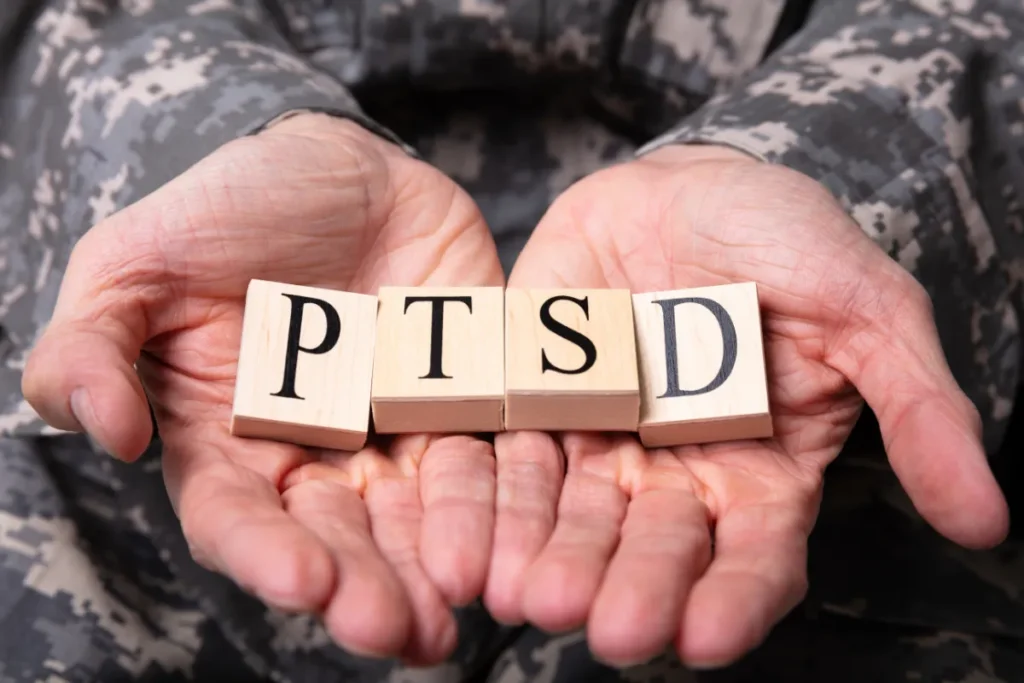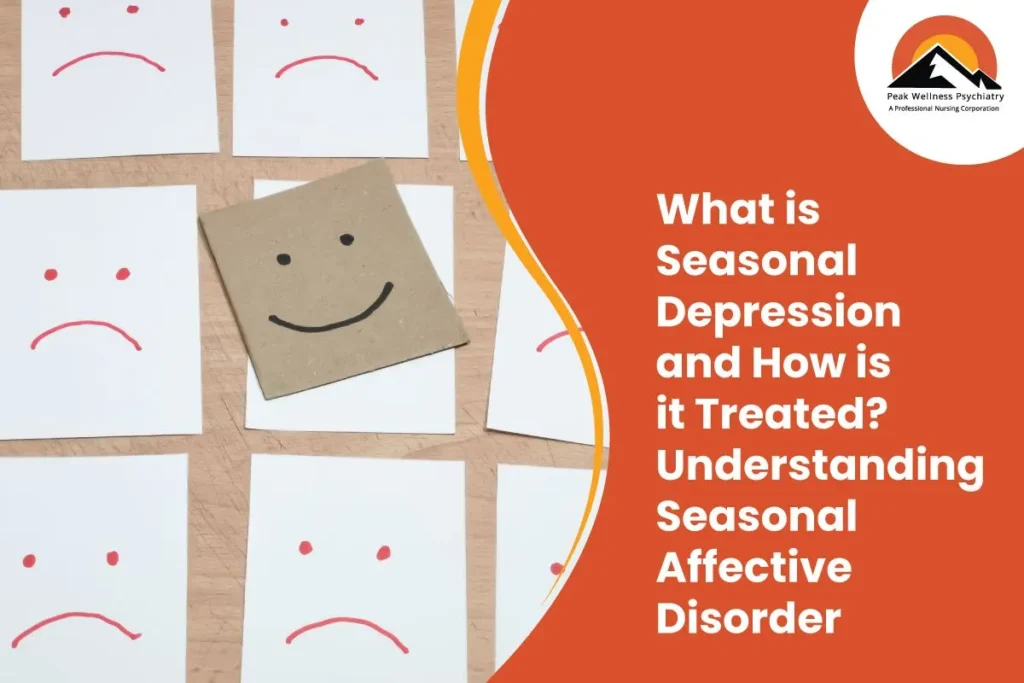Experiencing or witnessing life-altering events leaves deep emotional scars, sometimes leading to a condition that profoundly impacts a person’s quality of life. If you or someone you care about seems different after a distressing event, understanding PTSD can be the key to finding hope and healing.
We’re here to guide you through everything you need to know about PTSD, its causes, symptoms, treatment, and more.
What is PTSD?
Post-traumatic stress disorder (PTSD) is a mental health condition triggered by a traumatic event. While “trauma” describes a range of stressful situations, not all result in PTSD. Those who experienced or witnessed a terrifying and dangerous event are more likely to develop PTSD. When this type of event occurs, you often feel that your life or the lives of others are at risk.
PTSD is different from acute stress disorder (ASD). While both disorders arise from trauma, ASD symptoms begin immediately after the trauma, lasting from a minimum of 3 days to a maximum of 4 weeks. Beyond that, if symptoms persist, a PTSD diagnosis may be more appropriate.
PTSD Causes
Below are the causes of post-traumatic stress disorder, including potential triggering events and other factors that might affect its severity.
A. Traumatic Events
The nature, duration, and personal experience of a traumatic event all play key roles in the severity of PTSD.
- Natural disasters: Events like hurricanes, tsunamis, earthquakes, and floods can be deeply traumatic. Survivors may experience the loss of loved ones, homes, or entire communities, and witness firsthand nature’s sheer force and unpredictability.
- Assaults, violence, and accidents: Violent personal experiences such as muggings, physical or sexual assaults, or witnessing a violent death can lead to PTSD. Car accidents or other sudden, unexpected tragedies are also triggers.
- Combat and war experiences: Soldiers in combat zones face the threat of physical harm and witness horrors that leave deep psychological scars. The chronic nature of this exposure amplifies the risk.
- Other significant shocks or traumas: Medical emergencies, near-death experiences, or sudden and profound losses, also lead to PTSD. These instances shake the individual’s sense of safety and predictability.
B. Risk Factors
Besides traumatic events, certain factors can also increase the likelihood of developing PTSD post-trauma. These factors don’t cause PTSD independently, but they can influence its onset, severity, and duration.
- Previous traumatic exposure: Individuals with prior traumas, especially those unresolved, may be more susceptible to the effects of new traumatic experiences.
- Childhood trauma: Adverse childhood experiences, from neglect to abuse, can lay the groundwork for heightened vulnerability to PTSD in later life events.
- Mental health issues: Pre-existing conditions like depression, anxiety, or previous instances of PTSD increase the risk of developing the disorder after a new traumatic event.
- Lack of social support: One of the most critical factors that protect against PTSD is a strong support system. The absence of social support can feel isolating, making it challenging to process and cope with traumatic events.
- Additional stressors after the event: If individuals face more stress after trauma—such as financial strain, loss of a job, or the absence of a safe living environment—the risk of developing PTSD becomes higher.

How Does PTSD Affect a Person?
Post-traumatic stress disorder affects more than one part of a person’s life. The effects of PTSD are substantial and far-reaching. It changes how you feel, think, and react, both physically and emotionally. Understanding these implications gives better support and help to those dealing with the condition.
Physical
Individuals with PTSD struggle with chronic pain, muscle tension, or other bodily discomforts without apparent medical cause. Insomnia also occurs, sometimes accompanied by nightmares or night sweats.
There may also be a loss or increase in appetite, leading to significant weight fluctuations. Furthermore, chronic stress (common with PTSD) escalates the risk of cardiovascular problems, including hypertension and heart disease.
Psychological and Emotional
It is common for people with PTSD to experience depression, bringing persistent feelings of sadness, worthlessness, and a loss of motivation. As a result, anxiety levels rise, sometimes ending in severe panic attacks.
Detachment or estrangement is also prevalent, making you feel disconnected from the world or out of place among family and friends. This feeling comes with a lack of ability to feel positive emotions.
Cognitive
Cognitively, PTSD can manifest as memory problems, particularly concerning events surrounding the traumatic experience. Concentration becomes a challenge, which further complicates decision-making. Simple choices become daunting, rooted in fear of potential outcomes. Occasionally, individuals may feel disoriented and confused, as if they do not fully understand what’s happening in the present.
Social and Interpersonal
There’s a tendency for individuals to isolate, losing interest in activities they once enjoyed. When symptoms occur, intimate relationships and open communication become almost impossible. Minor disagreements can quickly turn into heated arguments.
Occupational and Daily Life
In the workplace, PTSD manifests as difficulties in job performance, stemming from concentration challenges and frequent absences. Routine tasks, such as shopping or driving, might unexpectedly become stressful or anxiety-inducing. Additionally, there may be an unexplained urge to avoid places, situations, or conversations that could evoke traumatic memories.
Long-Term Consequences
Over the long haul, the intense stress and emotional turmoil of PTSD drive some to substance abuse, seeking solace in drugs or alcohol. The profound feelings of despair and hopelessness also lead to suicidal thoughts or tendencies. Additionally, it increases vulnerability to other mental health disorders, such as depression, anxiety, or personality disorders.
How Common is PTSD?
Knowing the prevalence of PTSD gives us insight into its impact on populations and highlights the importance of awareness and interventions. PTSD can happen to anyone regardless of background, as suggested by the following statistics:
In 2020, around 13 million people in the U.S. were affected by PTSD.- 1 out of every 11 individuals will face a PTSD diagnosis at some point in their lives.
- In any particular year, roughly 5% of U.S. adults (5 in 100 people) experience PTSD.
- U.S. Latinos, African Americans, and Native Americans/Alaska Natives show higher instances of PTSD compared to Non-Latino Caucasians.
- PTSD can affect anyone, regardless of age, but its onset is most common in adults between 18–60.
- Women are two times more prone to PTSD than men, possibly due to differences in trauma type or hormonal factors.
- Military personnel, first responders, and healthcare professionals often face higher rates of PTSD due to constant exposure to traumatic situations.
- Specific communities, particularly those in conflict zones or areas prone to natural disasters, can have heightened rates of PTSD. Historically marginalized or persecuted groups might also face a higher prevalence due to cumulative traumas.
Signs of PTSD
Understanding PTSD symptoms is essential for seeking appropriate help and managing your well-being. These signs vary in intensity and duration – some individuals may experience them soon after the traumatic event, while others may not notice them until years later.
A. Re-Experiencing Symptoms
- Vivid, involuntary, and intrusive flashbacks where the trauma feels like it’s happening again
- Nightmares related to the traumatic event, leading to sleep disturbances
- Unwanted and recurrent thoughts about the trauma that are distressing and hard to control
B. Avoidance Symptoms
- Staying away from situations or places that remind you of the trauma and suppressing thoughts related to it
- Disconnecting from emotions or feeling distant from others, often leading to social withdrawal
C. Arousal and Reactivity Symptoms
- A heightened state of alertness, where you feel jumpy or easily frightened
- Constant feelings of tension, which can manifest as irritability or even anger outbursts
- Insomnia or frequent awakenings due to anxiety or nightmares
D. Cognition and Mood Symptoms
- Persistent negative thoughts about yourself or others, such as thinking, “I am bad” or “No one can be trusted”
- Wrongly blaming yourself or others for the traumatic event or its consequences
- Having difficulty remembering critical aspects of the trauma or feeling like parts of your memory are “blocked” or “fuzzy”
PTSD Treatment Options
Addressing and managing PTSD requires a comprehensive approach that caters to your specific needs. Various treatments are now available following advancements in medical research and psychological sciences. These PTSD treatments alleviate symptoms and, more importantly, empower individuals to reclaim their lives.
1. Therapy Approaches
Cognitive Behavioral Therapy (CBT)
A widely recognized form of talk therapy, CBT assists individuals in identifying and challenging negative thought patterns related to their trauma. This method teaches them to replace these thoughts with more positive and realistic ones, thereby altering their behavioral responses.
Eye Movement Desensitization and Reprocessing (EMDR)
EMDR involves recalling traumatic memories while making guided eye movements. This process helps desensitize the individual to the emotional charge of these memories, enabling them to process and integrate the trauma more effectively.
Exposure Therapy
Exposure therapy treatment gradually exposes individuals to the thoughts, feelings, and situations they might avoid due to trauma. Confronting them in a controlled environment can reduce the power and influence of these fears.
2. Medication
Antidepressants
These medications help alleviate the depressive symptoms often associated with PTSD. Commonly prescribed antidepressants include SSRIs and SNRIs.
Anti-Anxiety Medications
For those who experience severe anxiety or panic attacks, anti-anxiety medications can be a complementary treatment option.
Prazosin
Prasozin, originally used to treat high blood pressure, has shown promise in reducing or eliminating nightmares associated with PTSD.
3. Alternative and Complementary Treatments
Meditation and Mindfulness
These practices help individuals anchor themselves in the present, fostering a sense of calm and reducing hyperarousal symptoms.
Acupuncture
Some individuals find relief from PTSD symptoms through acupuncture, a technique that involves inserting thin needles into specific body points to stimulate the body’s natural healing processes and reduce anxiety.
Yoga and Exercise
Physical activity regulates the body’s stress response and releases pent-up tension. Yoga, in particular, combines movement with mindfulness, often benefiting those with PTSD.

Start Your Journey to Recovery!
PTSD manifests differently in everyone, making individualized treatment essential. There’s no one-size-fits-all treatment plan for PTSD, so a collaborative approach between the healthcare provider and the patient is crucial.
Recovery from post-traumatic stress disorder is not just about symptom reduction; it’s about regaining your sense of self, purpose, and connection. Many people find their path to meaningful and fulfilling lives post-trauma with appropriate support and treatment.
How We Can Help
Our team at Peak Wellness Psychiatry believes in an integrative and holistic approach to PTSD treatment. It means we look at the whole person, considering all elements of your life and well-being. By connecting with a highly-qualified psychiatric nurse practitioner, you’ll benefit from a tailored treatment plan that caters to your unique needs and experiences.
Scheduling an online psychiatric appointment is simple. Fill out our online booking form or call us at 888-909-8676. Don’t let PTSD dictate your life. We’re here to help guide and support you on your path to recovery.




